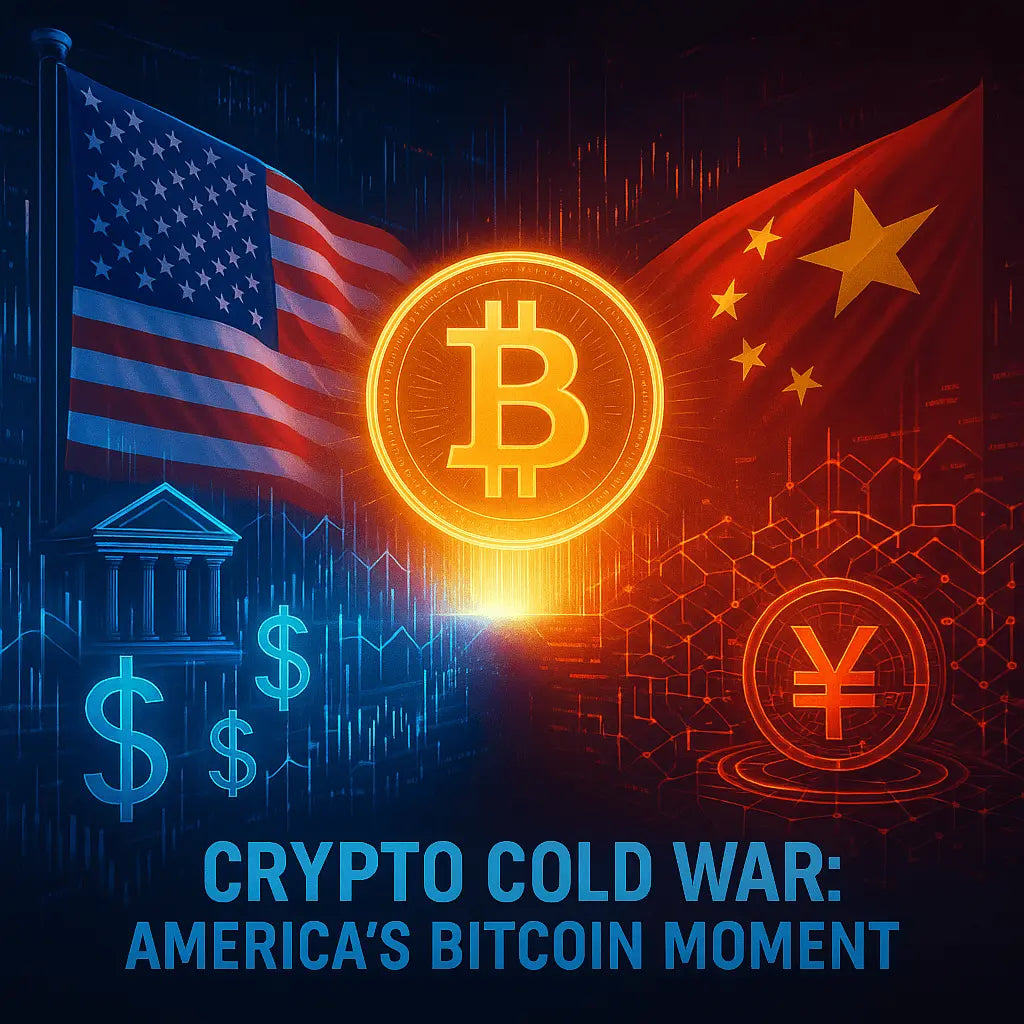At the 2025 Bitcoin Conference in Las Vegas, U.S. Vice President J.D. Vance delivered a fiery and impassioned speech that could mark a historic turning point in America’s digital financial policy. While Vance's remarks celebrated Bitcoin and the American crypto community, they also boldly drew a line between the U.S. and China’s drastically different approaches to digital currency and freedom. “China doesn’t like Bitcoin. So maybe America should run toward it,” he declared to roaring applause.
In what many are already calling the start of a new kind of Cold War—one fought in the digital realm of finance—Vance framed Bitcoin not merely as a financial tool, but as a symbol of personal liberty, political resistance, and national innovation.
Bitcoin vs. Authoritarian Control
Vance’s central thesis was clear: if the Chinese Communist Party fears Bitcoin, that alone is reason enough for the U.S. to champion it. He challenged the audience to consider why America’s top geopolitical adversary rejects Bitcoin. The answer, he implied, lies in Bitcoin’s very nature—it is decentralized, censorship-resistant, and empowering to the individual. These are all qualities antithetical to authoritarian regimes.
In Vance’s words, Bitcoin is “a tool against bad policy—regardless of which party enacts it.” And more than that, it is “a symbol and engine of personal freedom for the American people.” His framing of the Bitcoin movement as not just a tech innovation but a freedom movement was both powerful and strategic.
From Political Outsider to Crypto Advocate
The Vice President reminisced about his early political journey, recalling that when he first ran for Senate in 2022, he was one of the few candidates who actually owned Bitcoin. Back then, the crypto industry lacked political organization and was under sustained attack from the Biden administration and regulators like SEC Chair Gary Gensler.
Vance’s message to the crypto community was clear: those days are over. “There’s a new sheriff in town,” he said, signaling that the Trump administration now views the crypto community not as a threat, but as a critical ally in shaping America’s economic future.
Operation Chokepoint 2.0 Is Dead
One of the speech’s most memorable moments was Vance’s blunt eulogy for “Operation Chokepoint 2.0”—a term used to describe the alleged systematic effort by regulators to debank crypto firms during the Biden years. Vance made it clear that under President Trump’s leadership, such policies would not return.
“We will never suppress your community or deny the contributions you’re making to the economy,” he promised. This line, among many, drew thunderous applause and confirmed what many in the room had long hoped: the federal government may finally be ready to embrace, not stifle, digital assets.
Three Policy Priorities for Crypto
Throughout the address, Vance laid out a bold and structured policy roadmap for the Trump administration's digital asset agenda. These include:
1. Cleaning Up the Regulatory Mess
Vance criticized the “thousand cuts” regulatory approach of the previous administration, which he argued stifled innovation through legal harassment rather than productive oversight. “We are dismantling the mess left behind,” he said, referring to the rollback of hostile regulatory campaigns and the firing of key figures like Gary Gensler.
2. Passing the Genius Act
The Vice President strongly advocated for the Genius Act, a proposed bill to create a clear legal framework for stablecoins. He argued that stablecoins, particularly dollar-pegged ones, don’t threaten the U.S. dollar—in fact, they reinforce it. “They’re a multiplier for American economic power,” he said.
The Genius Act aims to keep stablecoin innovation onshore by reducing regulatory uncertainty, making the U.S. more competitive against global financial hubs like Singapore or Dubai.
3. Creating a Pro-Innovation Regulatory Framework
Finally, Vance discussed plans to build a “transparent, custom-built, innovation-supporting regulatory framework” for digital assets. The goal is to ensure that crypto is fully integrated into the mainstream economy and not pushed offshore due to outdated or punitive laws.
“If we don’t define a clear direction,” he warned, “we risk handing this $3 trillion industry to more crypto-friendly countries.”
Crypto as a Hedge Against Tyranny
Another powerful theme in the speech was the idea of Bitcoin as a hedge—not just against inflation or monetary mismanagement, but against political persecution. Vance referenced the Canadian trucker protests of 2022, when the government froze the bank accounts of protestors. “That ended the protests in under a week,” he said ominously.
In Vance’s worldview, Bitcoin is a shield in the digital age—protecting individuals from being de-platformed, de-banked, or silenced due to political beliefs. It’s not just about money; it’s about civil liberties.
Rejecting the Technocratic Elite
Vance also took aim at a broader elite class—those who, in his view, hijack emerging technologies not to innovate, but to control. He warned that both public and private sector elites often pursue technological dominance not to serve the people, but to surveil or manipulate them.
“But that’s not what Bitcoin is, and it will never be,” Vance said. “And you will make sure of that.” His comments drew a sharp contrast between bottom-up, grassroots innovation like Bitcoin and top-down surveillance tools like CBDCs, which are popular among governments like China’s.
The U.S. vs. China: A Tale of Two Futures
Perhaps the speech’s most geopolitically significant moment came when Vance directly compared the U.S. and China on the question of crypto. He argued that China's hostility to Bitcoin is rooted in its desire to maintain control over its citizens, especially their finances.
Meanwhile, America—if it remains true to its foundational values—should run toward Bitcoin, not away from it. “Bitcoin thrives in freedom,” Vance said. “It suffocates in tyranny.”
In this framing, Bitcoin becomes more than an asset—it’s a litmus test of national character. Do we believe in empowering individuals, or in controlling them? Do we trust our people, or our bureaucracies?
A Call to Political Action
Toward the end of his speech, Vance acknowledged a hard truth: crypto’s political apathy in the past made it vulnerable. “Back then, the industry didn’t organize,” he said, referring to the years of regulatory crackdown. But that’s changing fast. Politicians like Vance—and others he mentioned like Cynthia Lummis and Bernie Moreno—are rallying to crypto’s defense.
Vance urged the community to stay politically engaged, emphasizing that policy and legislation are now critical battlegrounds for the future of digital finance. With the 2026 midterms and 2028 presidential election on the horizon, crypto has evolved from a niche issue into a core pillar of national economic policy.
Conclusion: A Defining Moment
J.D. Vance’s speech will likely be remembered as a defining moment in America’s approach to cryptocurrency. It offered more than just political platitudes—it laid out a vision, a strategy, and a moral argument for why the United States must lead the world in digital finance innovation.
“Bitcoin has finally found an ally in the White House,” he said—and for millions of Americans, that declaration may be worth more than a single Bitcoin.











Leave a comment
This site is protected by hCaptcha and the hCaptcha Privacy Policy and Terms of Service apply.